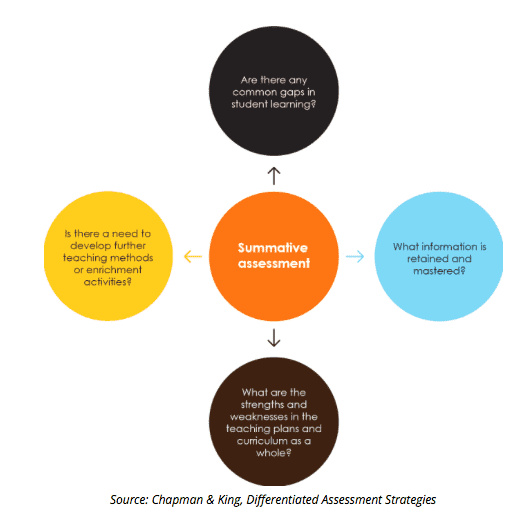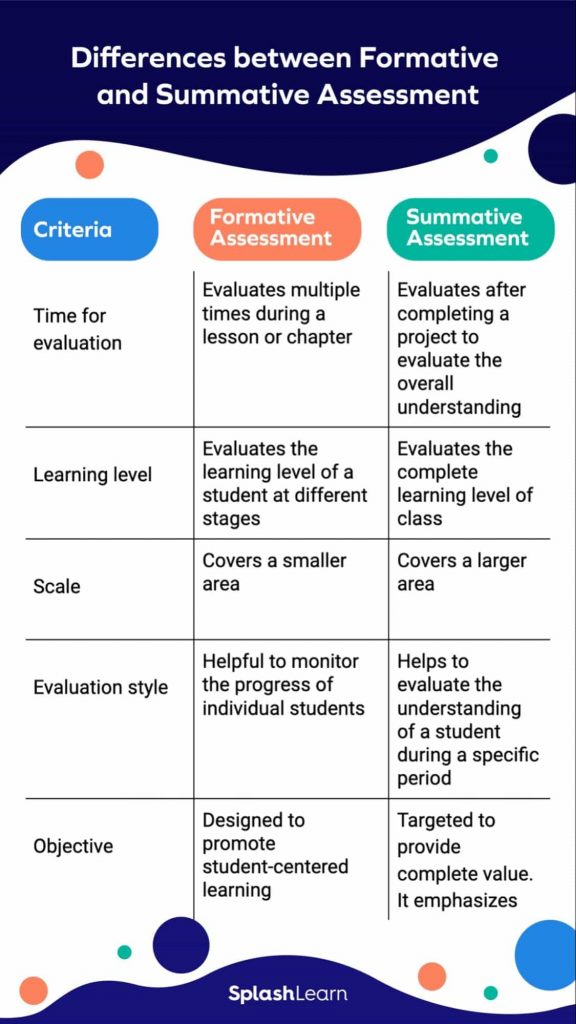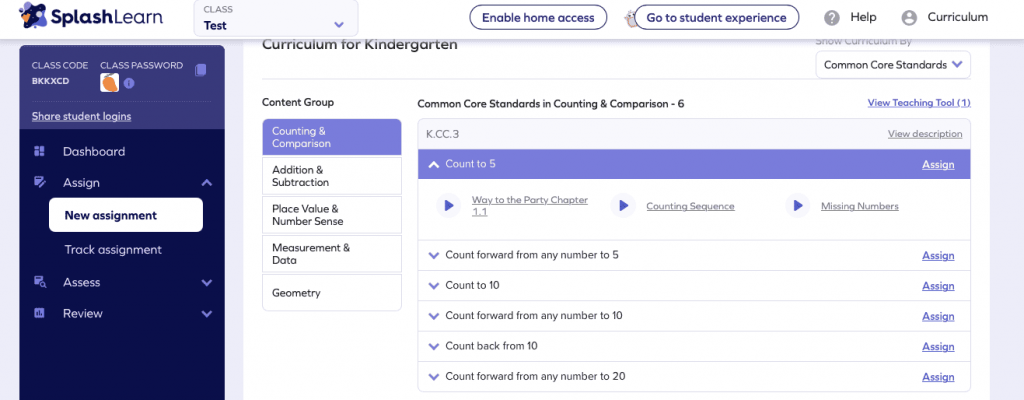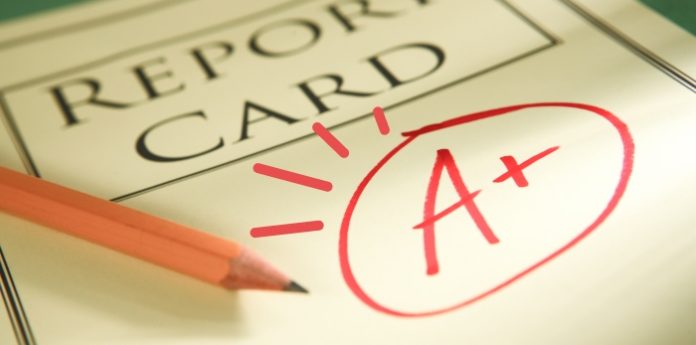Teaching is not just an intellectual process anymore. Today, it is also a logical process. Teachers need to assess individual students’ performance with tools like a summative assessment to provide customized classroom learning environments.
Therefore, modern teachers use formative and summative assessments to improve learning standards. Both assessments help educators achieve high learning goals in the classrooms.
But which assessment method is better in today’s education system?
This blog post will help teachers and learners understand summative assessments. We will also share the differences between formative and summative assessments.
What is Summative Assessment?

A summative assessment is an evaluation conducted at the end of a course or academic year. It depends on the grading and scoring system. Some of the common summative assessments are:
SplashLearn: Most Comprehensive Learning Program for PreK-5

SplashLearn inspires lifelong curiosity with its game-based PreK-5 learning program loved by over 40 million children. With over 4,000 fun games and activities, it’s the perfect balance of learning and play for your little one.
Try for free- Mid-term tests
- Reports
- Detailed papers
- End-of-class tests, etc.
The main objective of summative assessment is to evaluate the overall progress. This assessment shows how much a student has learned through a course, subject, or project in a particular timeline.
These assessments have high value as they take place in a controlled environment. You can use summative assessments to evaluate the comprehensive performance of the classroom to gain more insight. In a way, summative assessments can help you in two ways:
- Evaluate what your students have learned during the course
- Understand how prepared your students are for the next academic year
Related Reading: Best Educational Goal Examples that Matter for Students & Teachers
Summative Assessment Examples

1. In-depth reports
A typical SA example is asking students to pick a topic and write a full report. It helps students research in-depth and use their creativity to write a report. You can evaluate passion, intelligence, and overall student performance through reports.
2. Projects
You can give group or individual projects to your students. This SA will show what your students have learned throughout the year and how they can work together.
3. Personal evaluation papers
This summative assessment example is helpful for financial, business, or other technical subjects. In this, you can understand the in-depth opinions of students. These papers allow students to evaluate topics through different perspectives and build an unbiased view.
Why is Summative Assessment Important?

Today, many scholars are against summative assessments. They think it lacks real-time performance evaluation benefits like formative assessments.
However, we will suggest to teachers that both assessments are equally important to sustain in the modern education system. If formative assessments help monitor progress in real-time, then summative assessments set benchmarks to evaluate performance.
Summative assessments help to improve curriculums. When you note the gap between students’ knowledge and learning targets, this will indicate you want to change your curriculum. You can better plan the curriculum with summative assessments to conduct formative assessments.
Summative Assessment Benefits

Summative assessments can benefit both teachers and students in many ways, such as:
1. Motivates to study
For many students, periodic evaluation is the best motivation to study. Many students can only perform under pressure. So, summative assessment is the perfect motivation for some students to study hard.
2. Implements learning
Summative assessments allow students to implement their learning in a real problem. For example, memorizing the periodic table is one thing. However using the periodic table data in a chemical equation is different.
Thus, summative assessments like multiple-choice tests allow students to test their learning.
Related Reading: How to Build a Healthy Student-Centered Learning Environment and Why it’s Important?
3. Finds learning gaps
Summative assessment provides an overview of your class’s performance. This will help you evaluate the weaknesses and strengths of your students.
For example, you have taken a multiplication and factorization test in your class. Most students score high in multiplication tests, and only 50% score higher in factorization. This tells you that you need to improve your class’s teaching factorization.
4. Identifies teaching gaps
Summative assessment helps evaluate learning gaps and teaching gaps. It works as a wake-up call when you grade your student’s tests and the test results are not as expected.
This means your current teaching methods are not up to the mark. You need to adopt a new teaching method or strategy in your classroom, like:
- Use visual learning components
- Provide a stimulating learning environment
- Use different summative assessment methods, etc.
5. Provides insight
Summative assessments provide comprehensive insights to teachers. It shows what worked and what didn’t work in the academic year. Teachers can use this information to tweak their curriculum to raise learning standards for the following year.
6. Controls learning environment
Summative assessment scores provide standards for local, national, and global evaluation. Depending upon the standard scores, the government can fund the schools.
Summative Assessment Limitations

1. Reduces creativity
As strict criteria are set for summative assessment, it reduces creative involvement. Students have little room to showcase their creativity when following a standard assessment method.
2. Reflects on teaching ability
Teachers only have one chance to evaluate students’ performance, which reduces their teaching standards. They can’t make real-time changes in their teaching methods.
3. Can be biased
Summative assessments can be biased. If teachers want, they can favor some students while grading their tests. The success of summative assessments depends upon the integrity and honesty of the teacher.
Creative Ways to Use Summative Assessment in Your Classroom

Indeed, summative assessment has limitations that can impact teaching and learning standards. But if you twist up a standard summative assessment method using your creativity, you can gain immense value from SA. Here are a few creative ways to use summative assessments:
Related Reading: Classroom Organization Ideas to Make Teaching Productive
1. Short films
Instead of MCQs or essays, you can ask your students to record their reports on a camera. This way, students can use their creativity to make a unique report. For example, they can use visual charts, stories, or interviews to make their points compelling.
2. Podcasts
You can give a group or individual project to students to create podcasts. It is an interactive way to demonstrate learning and creative skills.
3. Infographics
Creating visual infographics for the final project allows students to show creativity. Students can use attractive visuals to cover different aspects of a topic, like definitions, statistics, etc.
4. Venn diagrams
Venn diagrams are an old yet effective way to visualize learning. This comparison technique helps compare different histories, social studies, and other concepts.
5. Living museum
You can ask students to create a small popup museum in the classrooms. This will help you teach one concept to the entire class excitingly. For teaching history or science concepts, this summative assessment mode is perfect.
Differences Between Summative Assessment and Formative Assessment
Are you confused about using summative or formative assessment in your class? Well, let’s understand what is difference between summative and formative assessment to get a better idea:

1. Time for evaluation
Teachers use formative assessments multiple times during lessons or chapters to evaluate students’ performance.
The summative assessment comes after completing a project to evaluate a student’s overall understanding.
2. Learning level
Formative assessment means constant monitoring of a student’s performance during a lesson. This allows teachers to evaluate a student’s learning level at different stages. Thus, they make instant decisions to improve the learning standards further.
In contrast, the summative assessment provides a one-time wholesome overview of the student’s performance. This is useful to know the complete learning level of your class.
Related Reading: How to Develop a Love for Reading in Students
3. Scale
The summative assessment covers a larger area than the formative assessment. For example, teaching a math chapter and taking a test is a formative assessment. But when you take a test of 5-6 chapters together, that’s a summative assessment.
4. Evaluation style
Formative assessment is helpful to monitor the progress of individual students. It helps teachers to catch problems using the right approach.
Summative assessment is a grading system in which overall performance is graded. It helps to evaluate the understanding of a student during a specific period.
5. Objective
Formative assessment is designed to promote student-centered learning. When teachers evaluate individual students’ performance, they can use personalized teaching methods based on a student’s weaknesses and strengths.
On the flip side, summative assessment is targeted to provide absolute value. It emphasizes a student’s grade at the end of the academic year.
Which Is Better – Formative or Summative Assessment?
Both formative and summative assessments are essential. Teachers need to conduct both assessments in classrooms to improve learning levels.
Using formative assessments, teachers can keep constant tabs on students’ progress and make instant decisions to improve their performance. At the same time, teachers should evaluate the complete performance of students to ensure that they understand the concepts before their next academic year.
So, it would help if you balanced formative and summative assessment strategies to drive maximum results from your students.

SplashLearn’s tool for teachers has elements that cater to both summative and formative assessments. With practice sessions and assignments that can be used after completion of every topic, students will solve their doubts time after time. With end-of-the-year assessments, you can ensure your students are well-prepared for the next academic year!
Frequently Asked Questions (FAQs)
What are examples of formative and summative assessments?
Examples of Formative assessment are homework assignments, quizzes, polls, surveys, entry slips, exit slips, etc. Summative assessment examples are – final projects, reports, presentations, essays, etc.
How do you make a summative assessment?
What makes a good summative assessment?
A good summative assessment reflects a wide range of skills of a student. Authenticity and reliability are the two traits of an excellent summative assessment that helps to improve the overall learning level in a classroom.

















